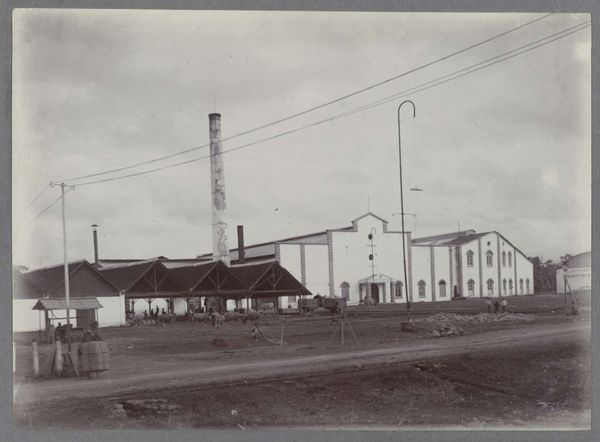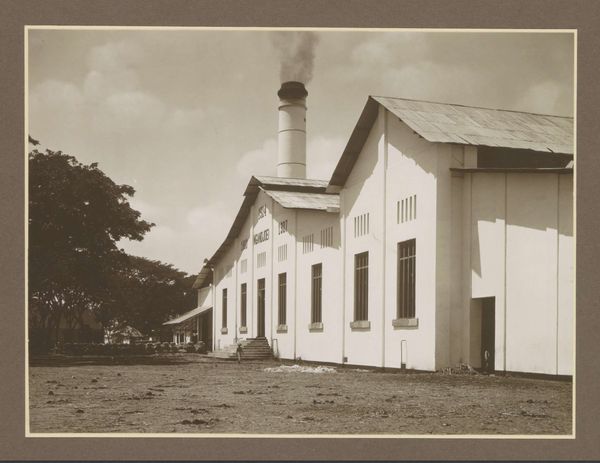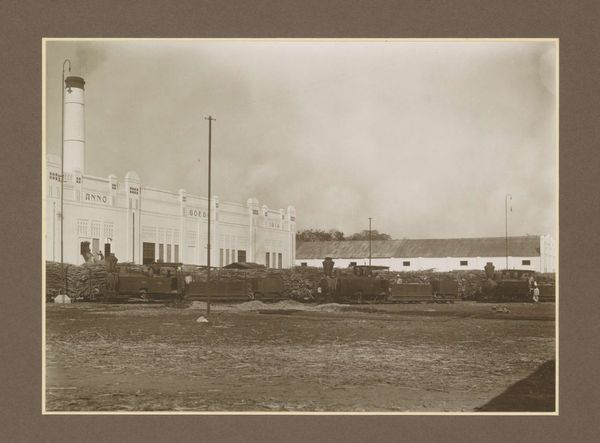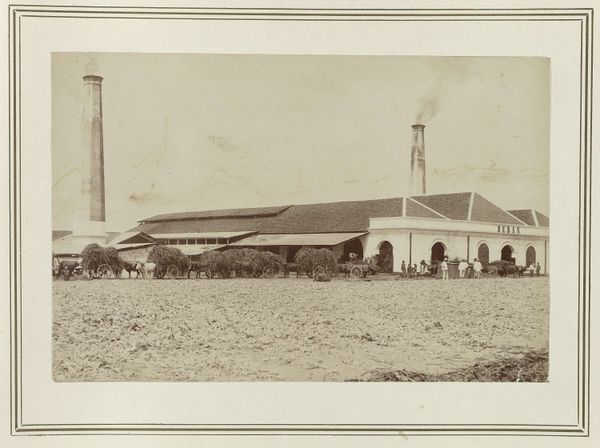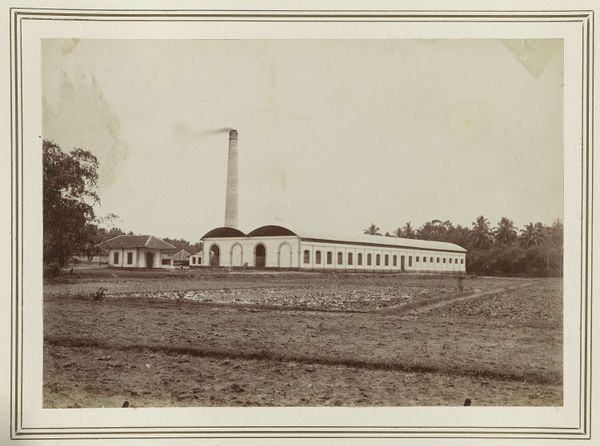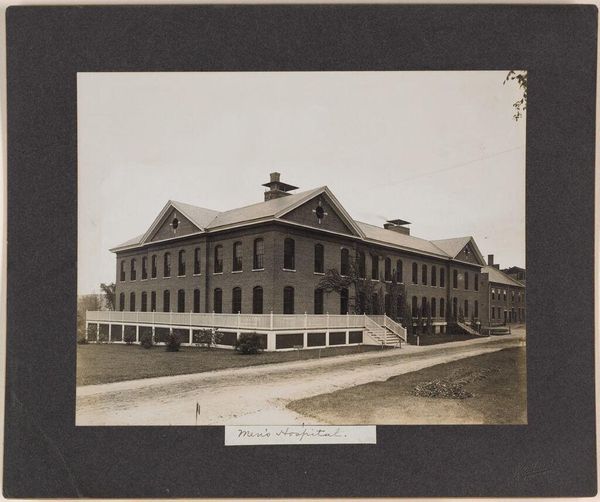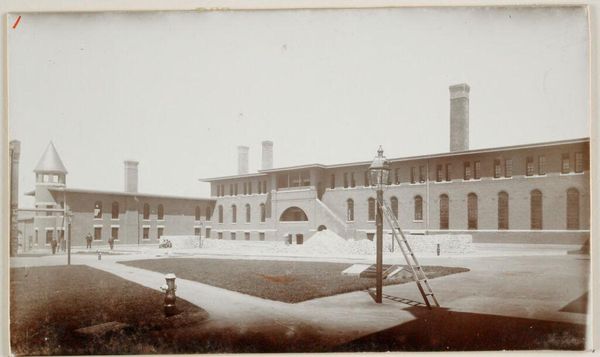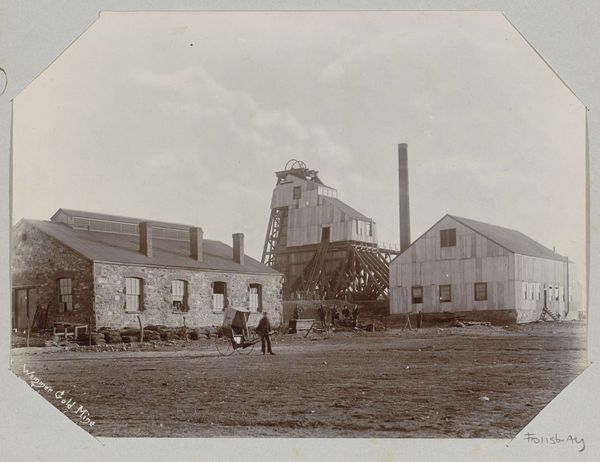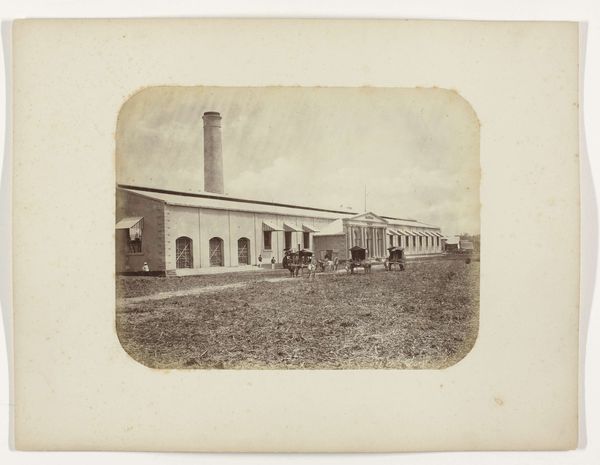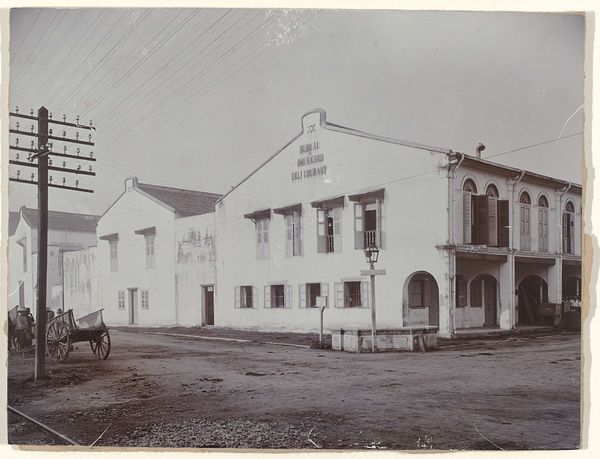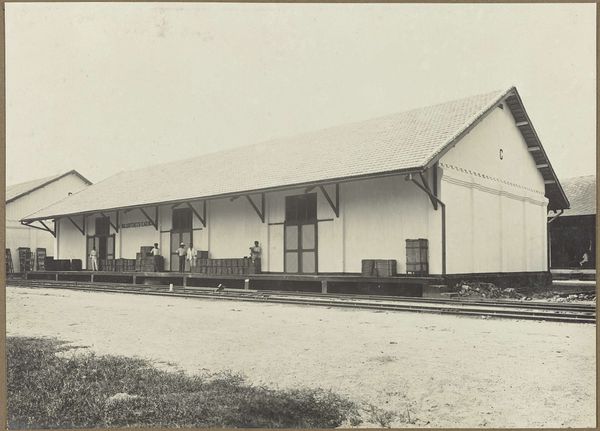
Suikerfabriek Nieuw Tersana in Tersana, voormalig Nederlands-Indië c. 1890 - 1911
0:00
0:00
photography
#
landscape
#
photography
#
monochrome photography
#
monochrome
Dimensions: height 169 mm, width 226 mm
Copyright: Rijks Museum: Open Domain
Editor: This photograph, taken sometime between 1890 and 1911 by Onnes Kurkdjian, depicts the Suikerfabriek Nieuw Tersana, a former sugar factory in what was then known as the Dutch East Indies. The monochrome tones give it a somber feel, especially with the smoke rising from the chimneys. What can you tell me about it? Curator: Looking at this image, I see more than just a factory. I see the exploitation of labor and resources inherent in colonial economies. The photograph itself is a material object, produced through specific industrial processes, used to document and, in a sense, legitimize the colonial project. Consider the very labor needed to grow and process the sugarcane. Editor: So you’re focusing on the factory as a site of production? Curator: Precisely. It’s vital to examine the means of production. This factory is not simply a building; it’s a machine for extracting wealth. What was the photographer’s role? Was he commissioned by the factory owners? Understanding the social and economic context of its creation, including how raw material turns to wealth and profit, reveals so much more than what's immediately visible. Who benefited from the product being built and developed? Editor: That makes me think about the intended audience. Would this have been shown in Europe to demonstrate progress in the colonies? Curator: Possibly, yes, although considering its potential local audience prompts us to understand labor conditions imposed on the land, reflecting global exchange networks shaped by consumption habits, as this industrial landscape transforms our relationship with commodities! Editor: I hadn't considered it that way before, but viewing it through that materialist lens definitely reveals new layers of meaning. Curator: Indeed. It moves beyond aesthetics to highlight the very structures of power. We need to challenge our definitions of art and the art historical importance behind sugar itself.
Comments
No comments
Be the first to comment and join the conversation on the ultimate creative platform.
